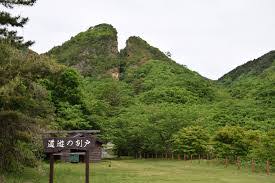
NEW DELHI, July 27, 2024 (BSS/AFP) - A network of mines on a Japanese island
infamous for using conscripted wartime labour was added to UNESCO's World
Heritage register Saturday after South Korea dropped earlier objections to
its listing.
The Sado gold and silver mines, now a popular tourist attraction, are
believed to have started operating as early as the 12th century and produced
until after World War II.
Japan had put a case for World Heritage listing because of their lengthy
history and the artisanal mining techniques used there at a time when
European mines had turned to mechanisation.
The proposal was opposed by Seoul when it was first put because of the use of
involuntary Korean labour during World War II, when Japan occupied the Korean
peninsula.
UNESCO confirmed the listing of the mines at its ongoing committee meeting in
New Delhi on Saturday after a bid highlighting its archaeological
preservation of "mining activities and social and labour organisation".
"I would like to wholeheartedly welcome the inscription... and pay sincere
tribute to the long-standing efforts of the local people which made this
possible," Japanese Foreign Minister Yoko Kamikawa said in a statement.
The World Heritage effort was years in the making, inspired in part by the
successful recognition of a silver mine in western Japan's Shimane region.
South Korea's foreign ministry said it had agreed to the listing "on the
condition that Japan faithfully implements the recommendation... to reflect
the 'full history' at the Sado Gold Mine site and takes proactive measures to
that end."
Historians have argued that recruitment conditions at the mine effectively
amounted to forced labour, and that Korean workers faced significantly
harsher conditions than their Japanese counterparts.
"Discrimination did exist," Toyomi Asano, a professor of history of Japanese
politics at Tokyo's Waseda University, told AFP in 2022.
"Their working conditions were very bad and dangerous. The most dangerous
jobs were allocated to them."
Also added to the list on Saturday was the Beijing Central Axis, a collection
of former imperial palaces and gardens in the Chinese capital.
The UNESCO committee meeting runs until Wednesday.